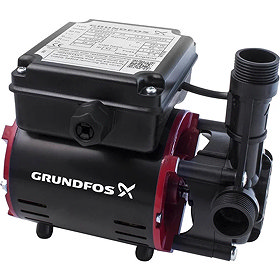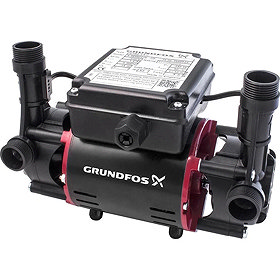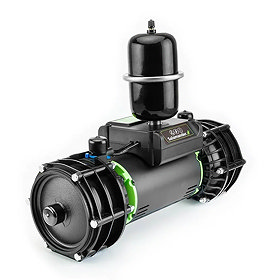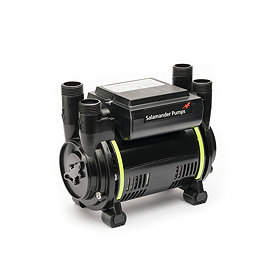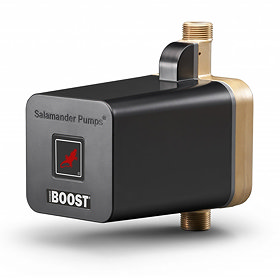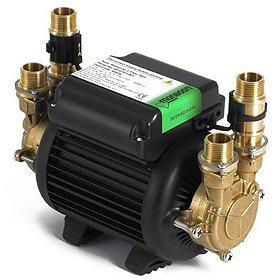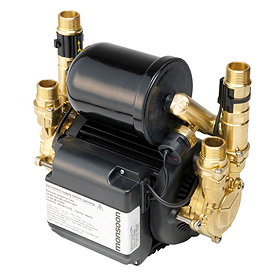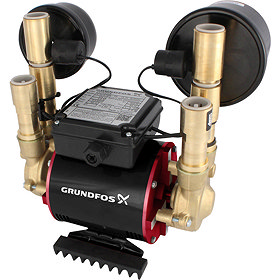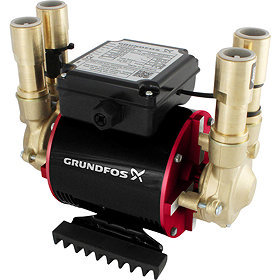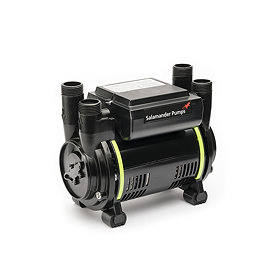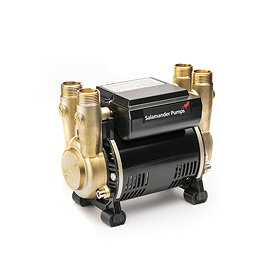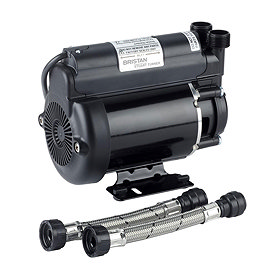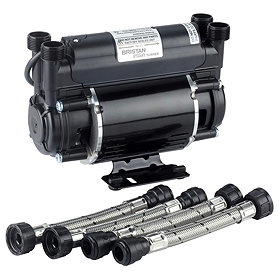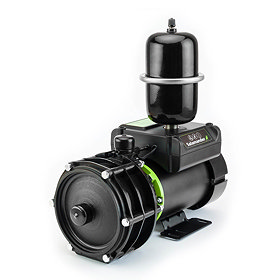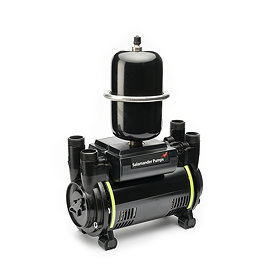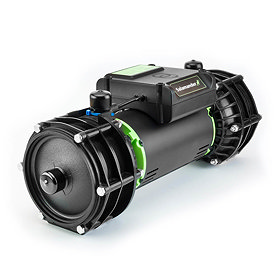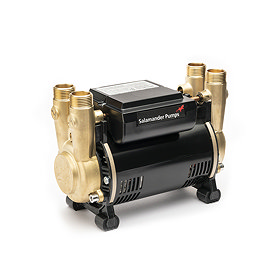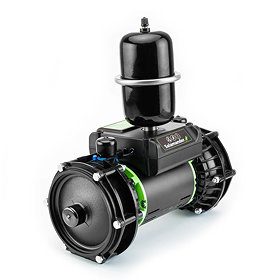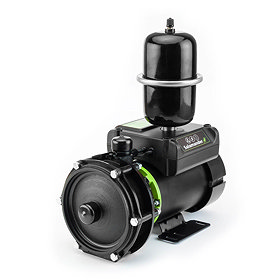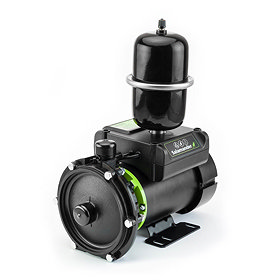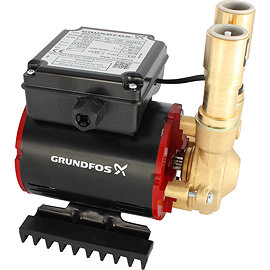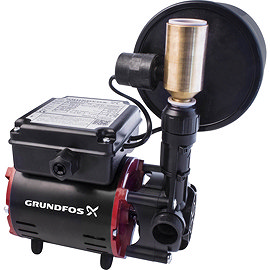Shower pumps are a practical solution for boosting water pressure and flow. Ideal for homes with low water pressure, these devices ensure a steady, powerful shower. However, choosing the right shower pump and understanding how it works, its energy usage and installation requirements are key to making the most of this investment. Below, we explore what shower pumps are, how much electricity they use, whether they can be too powerful, how to reduce noise and why professional installation is essential.
What is a shower pump?
A shower pump is a device that boosts water pressure and flow to improve your shower experience. It’s especially helpful in homes with low water pressure, like those with gravity-fed systems, where water flows weakly from a tank above the shower.
By increasing pressure in both hot and cold water pipes, a shower pump ensures a stronger, more consistent flow. For example, 1.0 bar of pressure equals water flowing from a tank 10 meters high, but a shower pump can boost this to as much as 3.0 bar, providing a much more powerful shower. For more information, take a look at our guide to shower pumps.
What types of shower pump are there?
Shower pumps come in a few different types, each designed to suit specific water systems and performance needs. The first decision is whether to go with a single or twin impeller pump:
- Single impeller pumps: These boost just one feed, usually the hot water line, making them ideal for smaller showers or simple setups.
- Twin impeller pumps: These pumps increase pressure on both hot and cold feeds. These are the most popular choice, especially for larger showers or power showers.
Next, pumps are classified by how they handle the water supply:
- Positive head pumps: These are the standard choice for gravity-fed systems where the pump sits below the water tank.
- Negative head pumps: These pumps are designed for setups where the tank is level with or above the pump, forcing water downwards to maintain pressure.
- Universal pumps: These can operate under both positive and negative head conditions, making them a versatile option if you’re unsure about your system.
Finally, pumps can also differ in how they move water through your pipes:
- Centrifugal pumps: These pumps use an internal impeller to push water efficiently, generally quieter and suitable for straightforward pipework.
- Regenerative pumps: These handle air and bends in the system better. Plus, they're easier to install and typically more cost-effective.
Do shower pumps use a lot of electricity?
Shower pumps don’t use a lot of electricity, especially during short showers. Most models have a power rating between 100 and 600 watts, so their energy consumption is relatively low when used briefly. However, energy usage can increase if the pump is used frequently or for extended periods. Factors like the power rating, efficiency of the pump and how often it's used will affect overall electricity consumption.
Can a shower pump be too powerful?
Yes, a shower pump can be too powerful, which may cause problems. Too much water pressure can damage your plumbing system and lead to expensive repairs. A powerful pump might also waste water, increasing your bills.
It can drain your hot water tank faster than it refills, leaving little or no hot water for others in the home. High flow rates, such as 40 liters per minute, can also overwhelm other systems, like toilet cisterns, and cause flooding.
How do you reduce noise from a shower pump?
Reducing noise from a shower pump is all about managing vibrations and choosing the right setup. Pumps naturally have to work hard to turn low-pressure water into a strong flow, so a bit of sound is normal. However, there are ways to keep it under control.
You can start by securing the pump to a solid surface, like a sturdy wall or a concrete block, which helps absorb vibrations that would otherwise amplify noise. Adding a shower pump anti-vibration mat under the unit can also make a big difference, soaking up excess movement and keeping the operation quieter.
Timing can help too. Shower pumps often seem louder at night when everything else is still, so using a timer to run the pump only when needed can reduce the perceived noise.
Do you need a plumber to fit a shower pump?
Fitting a shower pump should be handled by a qualified plumber or electrician to ensure safety and proper installation. Since water and electricity are involved, professional expertise is crucial to avoid potential risks.
The installation process can vary in complexity. Replacing an old pump might take about an hour, but installing a new one from scratch could take two to four hours. The cost typically averages around £150, but this can change depending on your setup and requirements.
